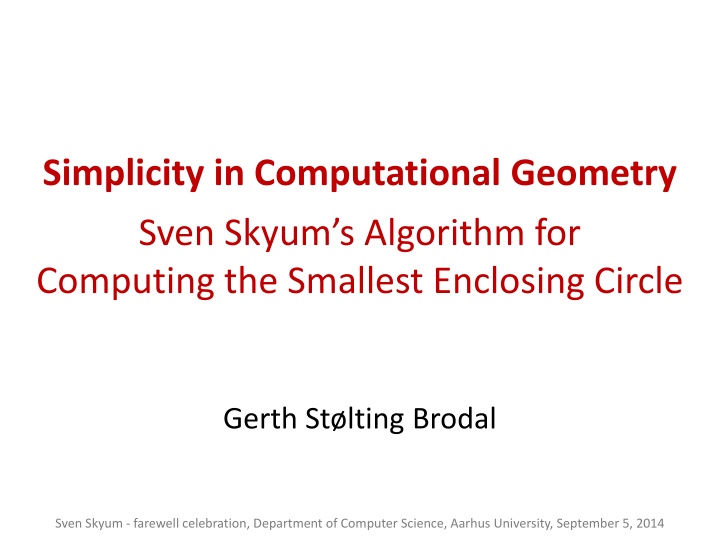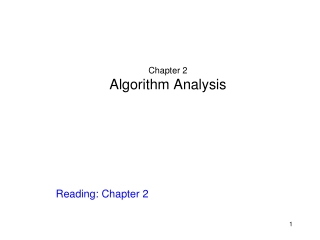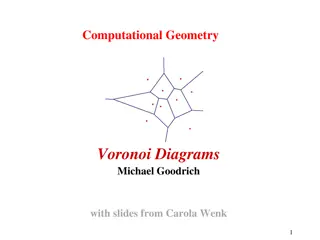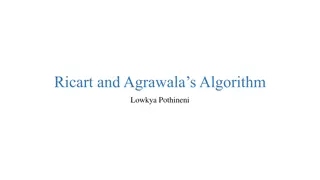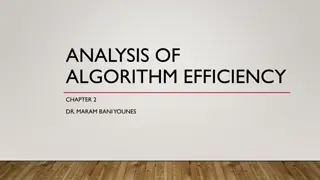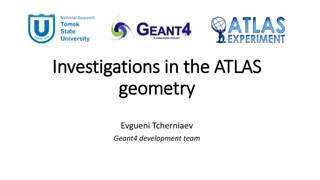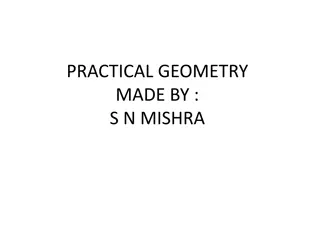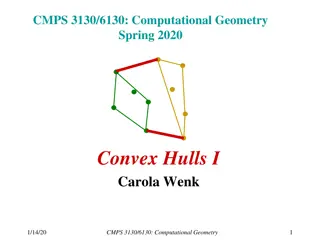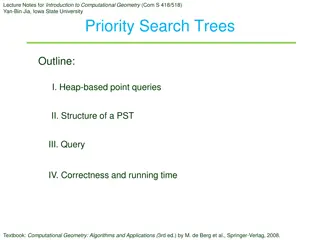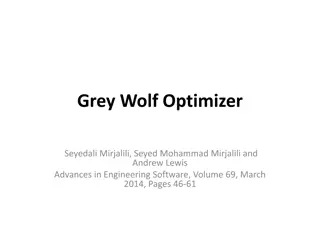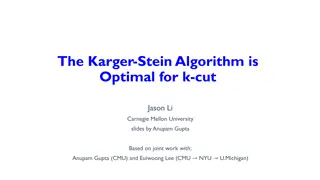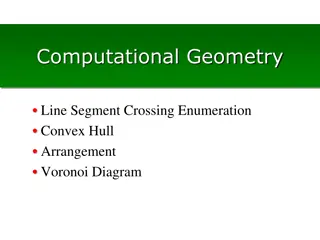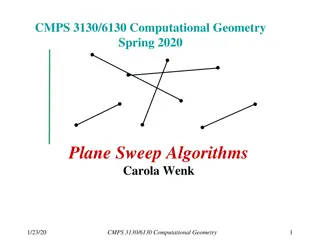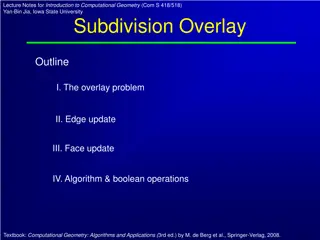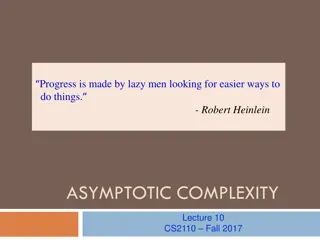Simplicity in Computational Geometry: Skyum's Algorithm for Smallest Enclosing Circle
In this computational geometry study, Skyum's algorithm for computing the smallest enclosing circle is explored. The algorithm's history, applications, and key findings are discussed, shedding light on the evolution of geometric algorithms over time.
Download Presentation

Please find below an Image/Link to download the presentation.
The content on the website is provided AS IS for your information and personal use only. It may not be sold, licensed, or shared on other websites without obtaining consent from the author.If you encounter any issues during the download, it is possible that the publisher has removed the file from their server.
You are allowed to download the files provided on this website for personal or commercial use, subject to the condition that they are used lawfully. All files are the property of their respective owners.
The content on the website is provided AS IS for your information and personal use only. It may not be sold, licensed, or shared on other websites without obtaining consent from the author.
E N D
Presentation Transcript
Simplicity in Computational Geometry Sven Skyum s Algorithm for Computing the Smallest Enclosing Circle Gerth St lting Brodal Sven Skyum - farewell celebration, Department of Computer Science, Aarhus University, September 5, 2014
Sven Skyum, A Simple Algorithm for Computing the Smallest Enclosing Circle. Information Processing Letters, Volume 37, Issue 3, 18 February 1991, Pages 121125
History Year Result Authors 1857 problem posed Sylvester 1860 graphicalsolution procedure Pierce Just because a problem A can be formulated as a special case of B is no reason for believing that a general method for solving B is an efficient way of solving A - Preparata & Shamos, 1985 1965 Lawson quadratic programming Zhukhovitsky, Avdeyeva 1966 (?? ?0)2+(?? ?0)2 min ?0 2max ? O(n4) The obvious O(n3), O(h3 n), O(n2) 1972 Elzinga, Hearn 1975 O(n log n) Shamos, Hoey 1977 O(n log n) Preparata 1981 O(n h) Chakraborty, Chaudhuri the involved constants hidden in O(n) are large. 1983 O(n) Megiddo - Skyum, 1991 However his method is not nearly as easy to describe and to implement, and the dependence of the constant in d falls far behind the one achieved by our method. 1991 O(n log n) Skyum 1991 O(n), expected Welzl - Welzl, 1991
p7 p8 Smallest Enclosing Circle p6 p1 p5 convex hull O(n log n) time p4 p2 p3 Convex polygon S = ( p1, p2, p3, , pn )
Observations C2 p5 C6 > 90 C1 p4 C3 > 90 p6 p3 C5 p2 p1 < 90 C4 Rademacher, Toeplitz 1957
Algorithm 1. if |S| 1 then finish := false; repeat (1) find p in S maximizing (radius(before(p), p, next(p)), angle(before(p), p,next(p)) in the lexicographic order; (2) if angle(before(p), p, next(p)) /2 then finish := true else remove p from S fi until finish fi; { answer is SEC(before(p), p, next(p)) } next(p) p before(p)
Top 20 citing Skyums algorithm 1. 2. 3. 4. 5. 6. 7. 8. 9. 10. The organization of mature Rous sarcoma virus as studied by cryoelectron microscopy 11. Hyperbolic Voronoi diagrams made easy 12. Collaborative area monitoring using wireless sensor networks with stationary and mobile nodes 13. Approximating smallest enclosing balls with applications to machine learning 14. The deployment algorithms in wireless sensor net works: A survey 15. Adaptive and distributed coordination algorithms for mobile sensing networks 16. ISOGRID: An efficient algorithm for coverage enhancement in mobile sensor networks 17. A novel hybrid approach to ray tracing acceleration based on pre-processing & bounding volumes 18. Fast neighborhood search for the nesting problem 19. Local strategies for connecting stations by small robotic networks 20. Algorithmic problems on proximity and location under metric constraints Movement-assisted sensor deployment Distributed control of robotic networks: a mathematical approach to motion coordination algorithms Smallest enclosing disks (balls and ellipsoids) Coordination and geometric optimization via distributed dynamical systems Design Techniques and Analysis Circle formation for oblivious anonymous mobile robots with no common sense of orientation Reactive data structures for geographic information systems Distributed circle formation for anonymous oblivious robots Imaging knee position using MRI, RSA/CT and 3D digitisation
Thank You Sven
